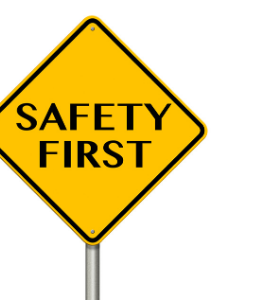
By: Megan Watson
This year we’ve seen an influx of negligence per se claims. Usually, this is a somewhat uncommon claim in the personal injury context. Many adjusters have little or even no experience with it. If you need a quick primer on the doctrine of negligence per se in Virginia, the following covers the basics.
Most actions for negligent personal injuries are common-law actions. The standard of care in these actions is typically that of “the ordinary prudent person.” To establish that the defendant did or did not meet the standard of care, the plaintiff must introduce evidence to show what the “ordinary prudent person” would or would not have done under the circumstances.
However, where there is no legislative enactment specifically and expressly granting a right of civil action, if it can be shown that the defendant’s behavior violated an existing criminal statute, this violation itself may establish that the defendant did not act as an ordinary prudent person would have acted. The violation of the statute is said to be negligence per se (i.e. negligence in itself), and no further evidence of the applicable standard of care and the defendant’s violation of the same is required. Stated differently, the criminal statute is borrowed and adopted by the court and is regarded as setting the applicable standard of behavior for civil as well as criminal purposes.
A plaintiff relying on negligence per se does not need to establish common-law negligence. Where the requirements of negligence per se are met, violation of the criminal statute in and of itself establishes that the defendant was negligent.
In Virginia, the elements of negligence per se are well-established by the Supreme Court
- The plaintiff must prove that the defendant violated a statute enacted for public safety.
- The plaintiff must belong to the class of persons for whose benefit the statute was enacted, and demonstrate that the harm that occurred was of the type against which the statute was designed to protect. Finally, the statutory violation must be a proximate cause of the plaintiff’s injury.
- The proximate cause is generally a factual issue to be decided by the trier of fact.
- Where the statutory violation is the proximate cause of the injury, the violation will support plaintiff’s recovery of personal injury damages because the violation is “the failure to exercise that standard of care prescribed by a legislative body.”
- However, if the violation of the statute merely creates conditions in which an injury occurs from other causes, there is no negligence per se.
Like with negligent entrustment claims, a demurrer is the proper mechanism to dispense with negligence per se claims in the early stages of litigation. The elements articulated by the Supreme Court must be alleged in the plaintiff’s Complaint, and the plaintiff’s failure to allege each element is grounds for dismissal and potential amendment of the Complaint.
 Megan N. Watson is an associate in the Litigation practice group. Megan joins McCandlish Holton from the Office of the Attorney General of Virginia where she interned as a fellow on the Medicaid Fraud Control Unit and the General Trial Unit. While earning her law degree from the Marshall-Wythe School of Law at the College of William and Mary, Megan held internships at the William & Mary Elder and Disability Law Clinic and the Legal Aid Society of Eastern Virginia.
Megan N. Watson is an associate in the Litigation practice group. Megan joins McCandlish Holton from the Office of the Attorney General of Virginia where she interned as a fellow on the Medicaid Fraud Control Unit and the General Trial Unit. While earning her law degree from the Marshall-Wythe School of Law at the College of William and Mary, Megan held internships at the William & Mary Elder and Disability Law Clinic and the Legal Aid Society of Eastern Virginia.


